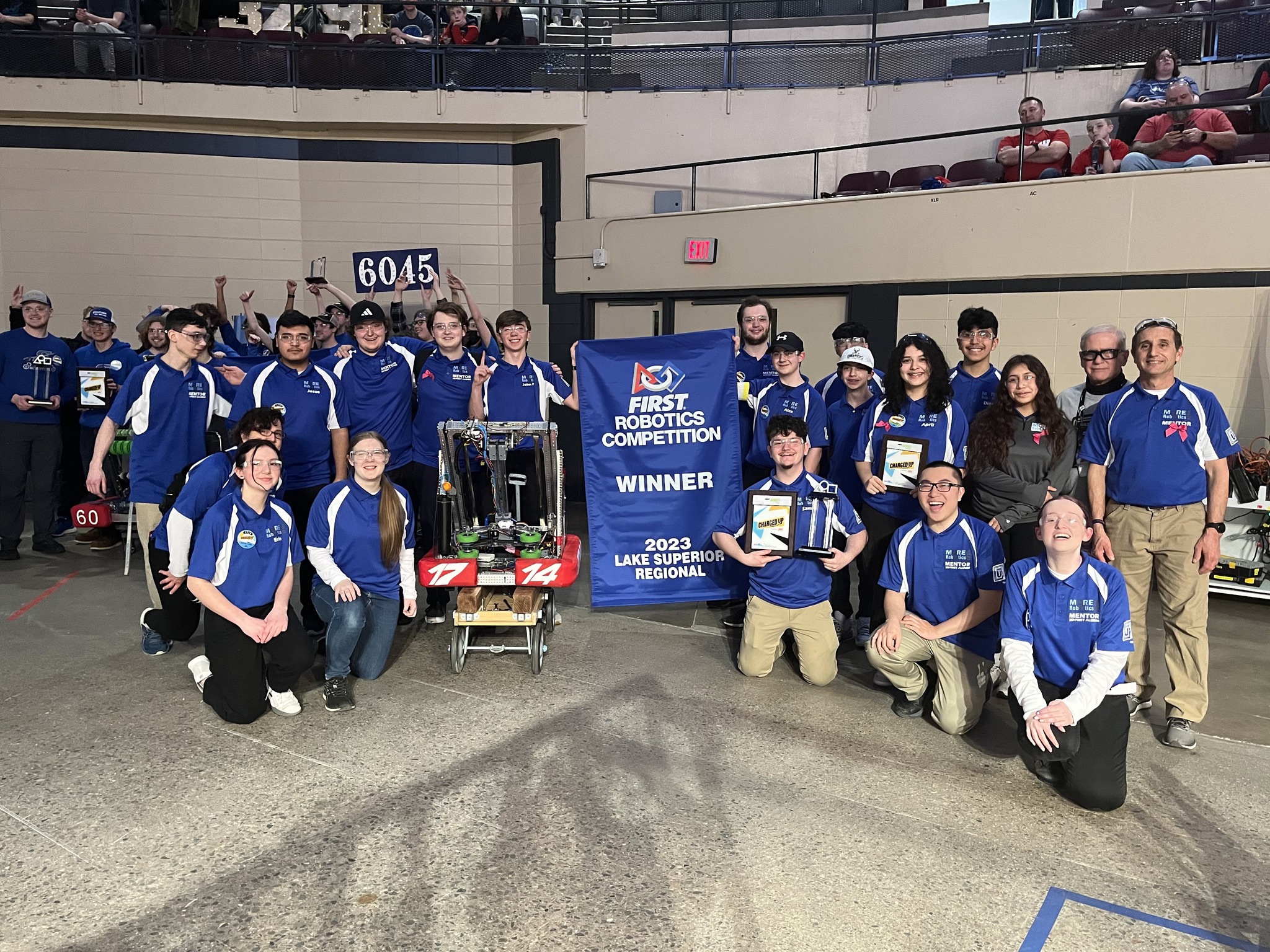
St. Thomas More High School’s MORE Robotics team is gearing up for its 2023-24 season, which begins with its first competition in January. (Submitted photo)
On any given weeknight or weekend, a group of St. Thomas More High School teens cluster around tables strewn with wires, wrenches, gears, drills and laptops. As they work, a robot rises in their midst.
Comprised of students in grades 9-12, MORE Robotics is a member of For Inspiration and Recognition of Science and Technology, a global nonprofit organization that motivates young people to pursue education and career opportunities in science, technology, engineering, and math.
Since the team began in 2006, MORE Robotics has advanced to the world championship 12 times and won the Impact Award, which honors exceptional community, at five competitions.
In her third year of robotics, April Reyes plans to major in engineering in college. Since joining the team, she has noticed changes in herself.
“I am better at using power tools, working with others and designing,” she said. “I never really thought I would have been able to help build a robot. (Mentors) show you how to get out of your comfort zone and try new things.”
Serving as the team’s official safety captain, Reyes also builds, designs and writes papers. The program is challenging and requires dedication from the students, who learn to juggle robotics with family, jobs, homework and other extracurricular activities.
“I think the most difficult part would be during build season because we are all just trying to get our work done. Sometimes it doesn’t come out good, and then we have to plan new things to make it work,” she said. “The most fun part of the program is going to competitions and meeting new people and seeing the different ideas that people have to challenge.”
According to Kevin Russell, Director of Marketing and Communications for St. Thomas More, last year’s team had 12 members from all four grades.
“The number is expected to grow this year based on the success of last year’s team and the summer camp that the team held in August for middle school students,” he said. “Last year’s team had 15 professional and collegiate mentors work with the students at some point during the season. Mentors were from Rockwell, Aurora Healthcare, Turn-Key Solutions, MSOE and the U.S. Army.”
Each year has a theme and scoring system that is set by FIRST Robotics. This year’s theme is “Crescendo.” The official competition kickoff event takes place Jan. 6, and following that date, the teams decide how to build their robot, so it performs best in the competitions. Last year’s theme was “Charged Up.”
In addition to building the robot, students must also manage the business side of the team, designing their team brand, promoting their efforts to the community, raising funds and recruiting future teammates. Along with replenishing and upgrading basic equipment and tools, the team must raise $5,000 to compete at the Wisconsin Regional at University of Wisconsin-Milwaukee Panther Arena.
The Wisconsin Regional represents one of nearly 200 national and international qualifying events for the FIRST Robotics Competition. The highest-performing teams at each qualification event advance to the FIRST World Championships, which requires another $5,000 participation fee, plus lodging, transportation and other travel expenses.
Russell explained that most of the funding is derived from sponsorships and grants, but also from individual donors.
“The school provides fundraising support for grant opportunities, but the business sponsorships are generally solicited by the team members themselves. DPI does award a grant to all Wisconsin schools who apply to cover part of the costs — that grant is usually around $3,500 to $4,000 depending on the number of schools that apply,” he said. “The team also holds fundraising events at local restaurants that award a percentage of the day’s sales to nonprofits.”
As the MORE Robotics Lead Mentor, Karl Akert knows a thing or two about robotics. He participated in the program as a St. Thomas More High School student and began mentoring the program in 2016.
A firmware engineer with Rockwell Automation, Akert develops embedded software for their motion control products. On the engineering path since middle school, he taught himself HTML and JavaScript from online resources. Akert’s interest in technical problems is why he chose St. Thomas More for high school, due to the Project Lead the Way engineering courses.
“Participating in MORE Robotics in high school was a good opportunity to practice engineering design and teamwork outside of a classroom setting,” Akert said. “However, as with most things in life, the biggest impact are the people and friends I have made from my time with MORE Robotics.”
Working with the students and helping them fuel their eagerness is one of the most enjoyable, yet thought-provoking, aspects of mentorship.
“We are challenged to keep providing tasks and information outside of build season. However, during build season, it is more about making sure everyone is working as a team and that no one is stuck, as designing and building a robot is a creative and taxing process,” Akert said.
In fact, the entire program is designed to be stimulating for students and to stretch and grow their abilities.
“We then have about seven weeks to build our robot in preparation for our first competition. During the competition season, we have the opportunity to learn from other teams and refine our design,” said Akert. “Our goal is to perform well enough at a regional competition to make it to the championship event.”






